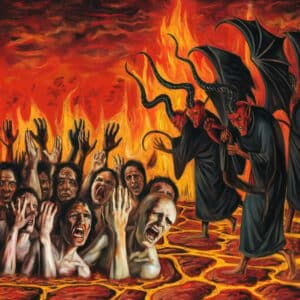

The Bible is important among christian believers. However, one of the most intriguing aspects of the Bible is its physical construction. Unlike most books, which are bound with thick pages and heavy covers, the Bible is bound with thin pages. So, why are Bible pages so thin?
Why Are Bible Pages So Thin?
While the Bible is a sacred text, it is also meant to be a practical book that can be easily carried and read. To achieve this, the pages of the Bible are made from thin paper.
This not only makes the Bible lighter and more portable, but it also reduces the risk of damage from moisture or humidity. In addition, thin pages allow for more pages to be included in a single volume, which is vital given the length of the Bible.
Other Reasons Why Bible Pages Are So Thin
To Allow the Bible to be Opened Up Completely Without Damaging the Spine
Thin pages allow the Bible to be opened up entirely without damaging the spine. This is especially beneficial for studying specific passages or following along during a sermon.
To Allow the Bible To Fit Into Small Bags
Thin pages make it easier to fit the Bible into a small bag or purse for transport. For this reason, Bibles with thin pages are often the preferred choice for serious students of the Bible.
Thin Pages Can Easily be Replaced if they Get Damaged
The Bible is one of the most popular books in the world, and its popularity is largely due to its durability. The pages of the Bible are thin so that they can be easily replaced if they get damaged.
It is Easy To Write Notes and Highlights on Thin Bible Pages
In addition to being lighter and easier to carry, thin Bible pages have another advantage: they make it easier for readers to take notes and highlights. While some may see this as a downside, those who like to annotate their Bible find it much easier to do so with thinner pages
Related Topics
What Are the Disadvantages of Thin Bible Pages?
Though the thin page design of the Bible makes it more portable and easier to read, it also makes the pages more susceptible to damage. Even a single drop of water can cause the pages to swell and warp, making them difficult to turn.
And if the pages are exposed to excessive heat or moisture, they can begin to disintegrate. As a result, great care must be taken to protect the Bible from the elements. When not in use, it should be stored in a cool, dry place away from direct sunlight.
And if the pages become damaged, they can be repaired with archival-quality materials. With proper care, even the thinnest Bible pages can last for centuries.
How Many Pages are in the Bible?
The Bible contains more than 1,200 pages. The actual amount of pages varies depending on the Bible’s edition. Maybe fewer or more pages than the specific number mentioned above.
The Old Testament has 993 pages, while the New Testament has 288 pages out of the 1,281 total pages in the Bible. There are 1,189 chapters in 66 books overall across both wills.
Genesis spans 50 chapters, 58 pages, and 1,533 verses, making it the longest chapter in the Bible. There are 31,173 verses in the Bible overall, with more than 23,000 found in the Old Testament. The Bible contains 774,746 words in total.
What Kind of Bible Paper is Ideal for Preaching?
Paper for preaching should be simple to turn, with little show-through, no glare in direct sunlight, and be ideal for reading with decent color and a great contrast with the text. It should also be suitable for putting notes on or underlining.
Usually, the paper has to be thicker than a conventional Bible. The more contrast and opacity, the better, as it must be viewable in low light. Even if it is farther away than you would typically read from—on the pulpit in front of you—it still needs to be readable.
The Thomas Nelson Preaching Bible uses 36gsm paper and is available in both the KJV and the NKJV. Given that it satisfies the abovementioned requirements, this paper is excellent for preaching.
What is Ghosting?
When the prints on one side of the page are visible on the other, this is known as ghosting or show-through. Bleed-through and show-through are distinct. The ink soaks through the page or pages when there is bleed-through.
The opacity of the paper will determine how the print can be seen from the other side of the page. The less translucent the paper is, the more opaque it is. Typically, thick paper is more opaque than thin paper. Highly opaque thin paper is frequently more expensive than opaque, thick paper.
The likelihood of show-through increases with font color. Some publishers use line-matching, a printing method, to improve this.
What is Line-Matching?
Line-matching, sometimes called line-on-line, is a printing method that aligns the text lines on both sides of the page at the same spot.
Even on thin paper, line matching reduces show-through. The text from the opposite side of the page isn’t visible except where there is no text because it is printed within the same line on both sides.
Wrap Up
The thin pages of the Bible make it easy to carry and open, which is vital for a book that is often used for personal study and reflection.
The pages are also thin so that they can be easily replaced if they get damaged, and this also makes it easier for people to write notes and highlights in the Bible and open it entirely without destroying the spine.
While the thin pages may not seem like a big deal, they play an essential role in making the Bible a versatile and durable tool for spiritual growth.







